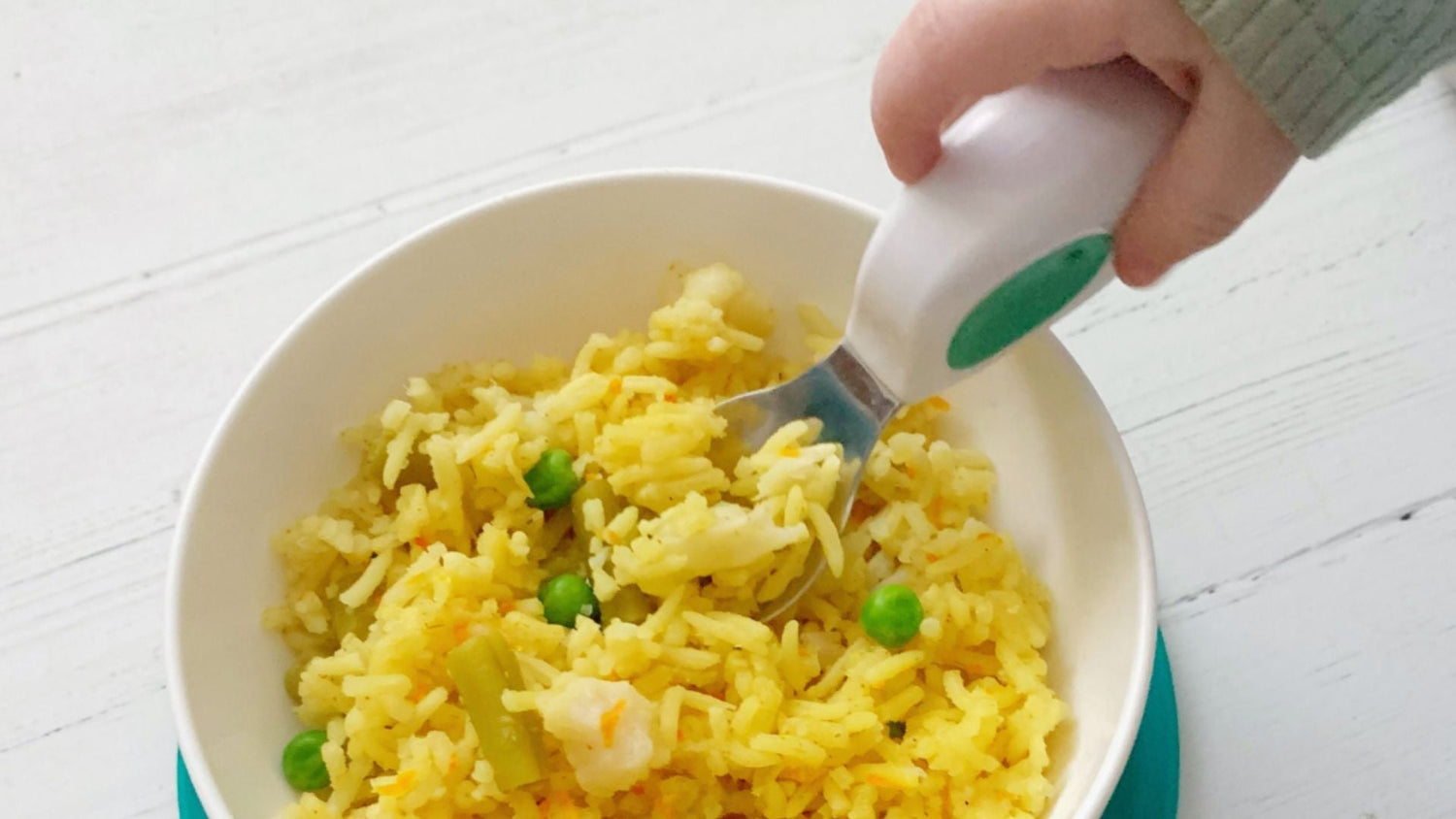Thyme to spice things up at mealtimes? Little ones are natural food explorers, and introducing herbs and spices can open up a world of exciting flavours. But knowing when and how to start this flavour adventure can feel overwhelming for many parents.
In this guide, we'll explore:
- The best time to introduce herbs and spices
- Safe options to try first
- Simple ways to build flavour confidence
- Practical tips for success
- Solutions to common challenges
Benefits of introducing herbs and spices

Adding herbs and spices to your toddler's food isn't just about making meals more interesting - it's a valuable way to develop their palate and encourage healthy eating habits without relying on salt or sugar. Many herbs and spices also offer nutritional benefits that support growing bodies and developing immune systems.
- Early introduction of varied flavours helps:
- Develop diverse taste preferences early
- Make vegetables more appealing
- Support cultural food connections
- Create healthy eating habits
- Add nutrients naturally
- Reduce reliance on salt and sugar
Safe introduction guidelines
Understanding when to introduce different herbs and spices helps create a positive experience for your little one. Most healthcare professionals suggest that most mild herbs and spices can be introduced alongside other solid foods from around 8-10 months, though stronger flavours should wait until after 12 months.
Safe starting options include:
- Gentle herbs (basil, parsley)
- Mild spices (cinnamon, sweet paprika)
- Aromatic additions (garlic, ginger)
- Common herbs (mint, dill, thyme)
Building flavour confidence

Starting your herb and spice journey requires a gradual approach. Think of it as teaching your toddler a new skill - you wouldn't expect them to run before they can walk, and the same applies to exploring new flavours.
The key to success is taking small steps. Start by introducing just one new flavour at a time, using the tiniest amount possible. Always begin with mild options that won't overwhelm your little one's developing palate. Try mixing these new flavours into foods your toddler already knows and enjoys - this helps make the unfamiliar feel more approachable.
Remember to give them time to adjust to each new taste before introducing another. This gentle, patient approach helps build lasting confidence with food exploration.
Creating positive mealtime experiences
When introducing toddlers to new foods, the environment plays a crucial role in their willingness to explore and enjoy meals. A relaxed and fun atmosphere can transform dining from a potential challenge into an exciting adventure of taste and discovery.
By using child-friendly cutlery, serving appropriate portion sizes, and making family shared dinner time a priority when possible, you can help your little ones develop healthy eating habits and a positive relationship with food.
Simple recipes to start your flavour journey

Making herbs and spices part of everyday meals helps normalise these new flavours for your toddler. The easiest way to begin is by adding gentle flavours to dishes your little one already enjoys. Here are some simple ideas to try:
- Cinnamon in hot cross bun porridge
- Fresh herbs sprinkled on tomato pasta
- Turmeric stirred into rice
- Mint added to fruit salads
Supporting fussy eaters
Many toddlers go through phases of being cautious or fussy with new flavours. This is completely normal developmental behaviour and understanding this can help you stay patient during the process.
Try your best to support them by:
- Keeping portions very small
- Praising any interaction with new foods
- Making mealtimes pressure-free
Safety considerations
While most herbs and spices are safe for toddlers, certain precautions help ensure a positive experience. Always supervise mealtimes and be aware of any potential allergies.
Important safety tips:
- Avoid salt-based seasonings (young children's kidneys are still developing and can’t process high sodium levels effectively)
- Skip hot spices until after 12 months
- Watch for any unusual reactions like rashes, digestive issues, or breathing difficulties, which could indicate a food sensitivity or allergy.
- Start with minimal amounts and monitor how your child's body responds.
Nurturing culinary confidence

Exploring new flavours provides excellent opportunities for developing independent eating, and the right approach to mealtimes can transform eating from a routine task into an exciting journey of sensory exploration.
Looking to make mealtimes more engaging for your budding food explorer? Discover how toddler cutlery can support your child's culinary adventure, helping them develop independence, motor skills, and a positive relationship with food. It's not just about what's on the plate—it's about giving your toddler the tools to explore, learn, and grow with each delicious discovery.




Hinterlasse einen Kommentar
Diese Website ist durch hCaptcha geschützt und es gelten die allgemeinen Geschäftsbedingungen und Datenschutzbestimmungen von hCaptcha.